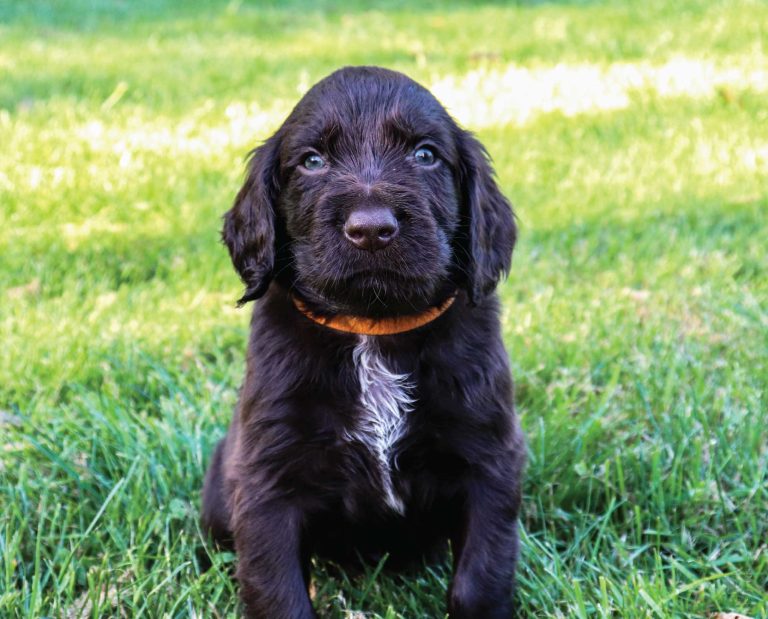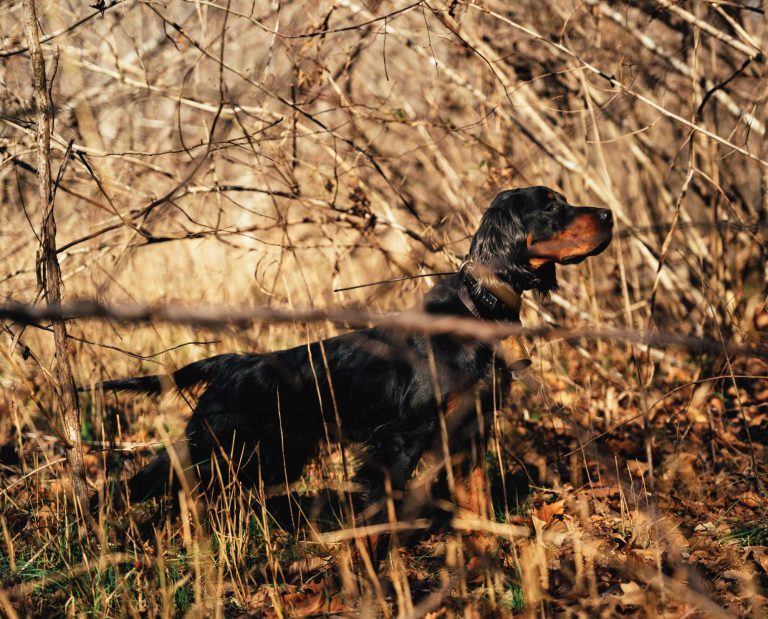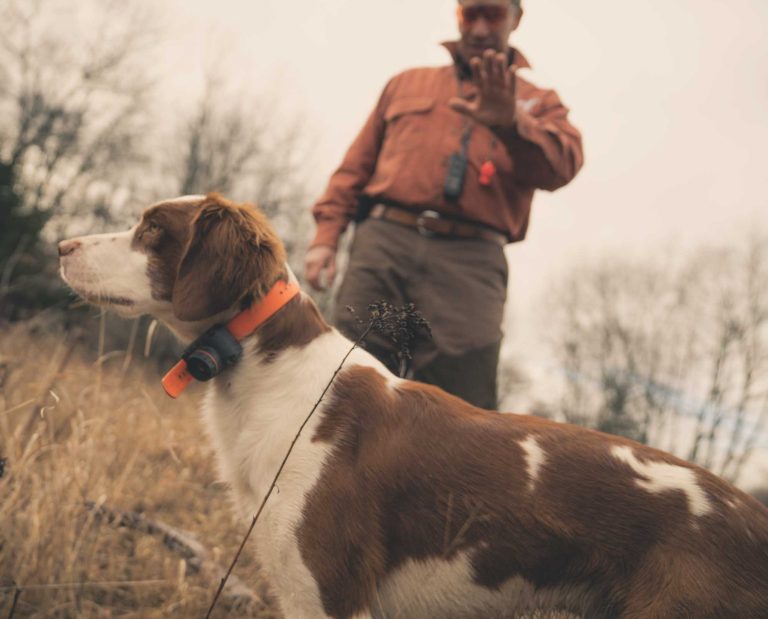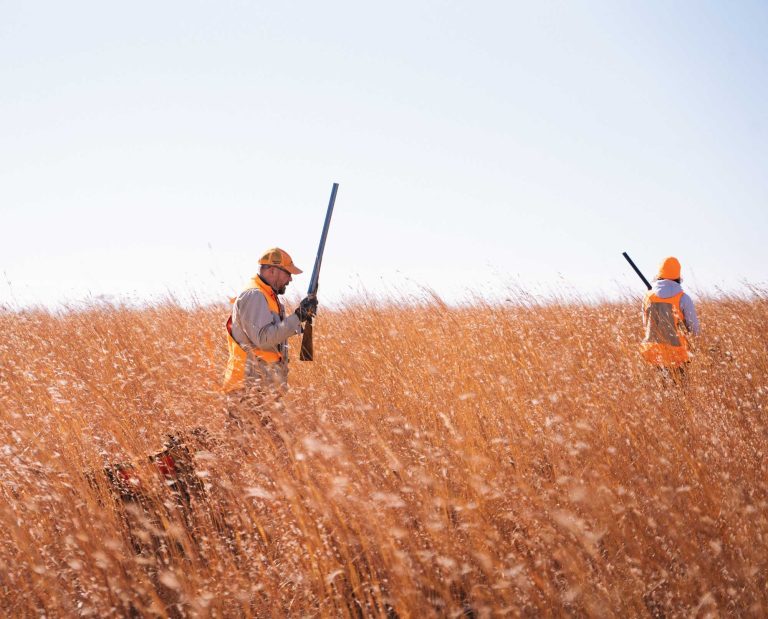Dogs and Snake Bites
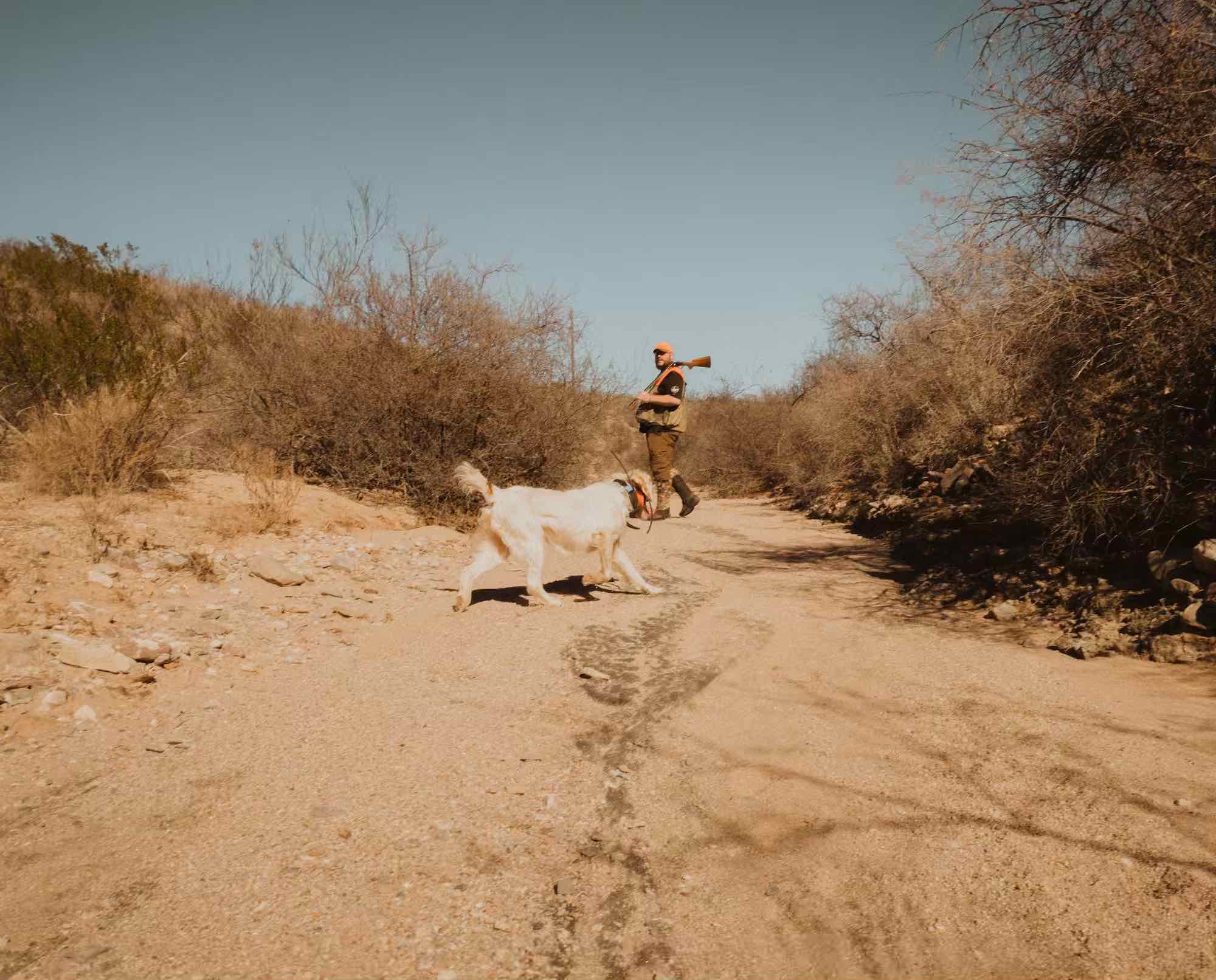
Venomous snakes can be found in the majority of states, so understanding how to avoid them and what to do in the event of a strike can save your dog’s life
It was day two of the ten-day sharptail camp in Nebraska when we unloaded the dogs for the second walk of the morning. The first walk had proven unfruitful and we hoped for better luck in this field before the mercury rose too high, forcing us back to camp and lunch. Once the brace of Brittanys had been unloaded and their GPS collars donned, off we went into the knee-high grass and brush in hopes of finding the first bird of the trip.
The Brittanys, both five years old, worked the field like the trial champions they were. They worked every bit of cover into the wind in the intertwining criss-cross dance of the bird dog. We had scarcely covered 200 yards when we saw Jack, the elder of the two, go on point 100 yards ahead.
We picked up our pace to honor Jack’s point when we noticed him jump back and go on point again, only to jump back a second time. It was then that we realized that Jack had pointed a rattlesnake. He was called off point, so he ran back to meet us while we rushed to him. We quickly made a path around the rattler, giving it a wide berth, and decided to keep on our way after checking Jack for swelling or any other sign of receiving a strike. We checked the go-to spots: muzzle, face, chest, and front legs. When no sign was found, we continued on with our walk.
Roughly five minutes after this decision, we noticed Jack starting to slow down and his back end starting to sag to starboard. Having seen no sign of a strike, we assumed this was heat-related, and so we began dousing him with most of the water in our packs. My hunting partner picked him up and carried him as far as Jack would allow, before putting him down again a couple hundred yards from the truck. At this point, Jack was acting normal again, yet still a bit lethargic in the legs. Reaching the truck and additional water, we again doused and watered the dogs before loading them into their kennels. During the process, Jack let out a yelp when his stomach was touched; a quick look showed swelling and black-and-blue marks on his stomach and groin areas. It turns out that the strike didn’t occur while Jack was pointing the snake, but during the subsequent retreat, which exposed his underside to the bite.
A hasty trip to the local vet was next, where Jack was sedated and given antivenom and an IV drip overnight. The vet also applied a charcoal drawing cream to Jack’s underside, which is thought to draw out the venom via the pores in the skin. My friend later told me that a visible pool of liquid was evident on the charcoal after a short period of application.
This encounter was the first time I’d ever seen a dog get bit by a snake, even though I live the Sonoran desert of central Arizona, which holds one of the densest populations of venomous snakes in the nation. Here in State #48, we are home to 14 of the 21 venomous species of snakes found in the US.
How to avoid rattlesnake encounters
Forty-seven of the 50 states in the union have some species of rattler, with Maine, Alaska and Hawaii being the only “safe” states. It should also be noted that these species are venomous, not poisonous, as venom is injected while poison is ingested. Such widespread regional diversity of venomous snakes means that there is a chance that you or your pup may bump into one during a hunt or a training session, and you should be prepared to act, should the need ever arise.
They always say that the best defense is a good offense, and that applies as well to snakes as to football. Preventative maintenance, such as snake-breaking (also known as snake avoidance training) and snakebite vaccines can help you in the long run should the need ever arise.
Snake avoidance training
Snake-breaking is essentially a training session whereby a dog is convinced that the snake he can smell in front of him is causing the pain he feels in his neck from a training collar. This shows the dog that the snake is something to avoid, which does two things in return. The training helps the dogs learn to steer clear of serpents, but it also provides you with an early detection device in seeing the dog’s reaction to an encountered snake.
Avoiding prime snake habitat
Another important defensive tactic is to be mindful of the environmental factors that can lead to a snake encounter. Ultimately, this tactic is the most successful one when it comes to avoiding a strike. These environmental factors include taking into account the habitats you want to hunt as well as the temperatures you choose to hunt in.
Here in Arizona, we find snakes in myriad habitats from the Arizona black rattlesnake (Crotalus cerberus) which inhabits the mountains and rim country of Northern Arizona, to the ubiquitous Western diamondback (Crotalus atrox) and Green mojave (Crotalus scutulatus), rattlers that are common in Central Arizona but can be found in the majority of the state. These two species will be the most commonly found by bird hunters in the state. Both species can be found throughout the desert, but rock outcroppings and desert washes tend to be the more common sites for an encounter. These environments provide access to their prey while also providing cover from predators like owls and hawks.
A reliable way to lessen the chances of a snake encounter would be waiting for the temperatures to drop. Seventy degrees Fahrenheit is considered the magic number for snakes to be active in the southwest. Temperatures lower than 70 won’t always drive a snake to its hole, but it will make the snake more lethargic and less prone to strike if an encounter does occur.
Venomous snake vaccines
The rattlesnake vaccine is just what it sounds like—a veterinarian-administered dosage of low volume venom to get your pup’s immune system set up to fight off the real deal. It should be noted that, anecdotally speaking, these vaccines have been alleged to cause some poor reactions, but they also just might just save your pup’s life. Of course, just like other shots and training, your dog might require refresher/booster visits to increase the likelihood of a successful outcome. These treatments shouldn’t be taken lightly, so be sure to talk with your veterinarian about these vaccines before pulling the trigger.
What to do if your dog gets bit by a snake
If your dog does get bit before receiving the aforementioned treatments, all is not lost. Once a strike occurs, the first thing to remember is not to panic, both because it will affect your decision-making process as well as causing your dog will pick up on it and possibly panic as well. Following a strike event, your first major course of action is going to be to get the dog to an open vet clinic. For this reason, knowing not only what clinics are in the area, but which ones will be open on a random Sunday afternoon will be very important.
In addition to getting your pup to the vet, many hunters in snake-prevalent areas are known to carry Benadryl in their kits. This is a good idea, as long as you remember that Benadryl is not a cure for a strike, but used instead to lessen your dog’s discomfort en route to the vet. Benadryl is used to help reduce the swelling associated with a strike, but in no way does it actually counteract the venom coursing through the bloodstream. As with anything else, consult with your vet about proper dosages before you need the information in an emergency.
Luckily for Jack, he was able to get to a veterinarian in time to get the proper treatments quickly. Within 24 hours of dropping him off, we were called to come and get him from the clinic. Jack sat out the rest of the trip, spending his time recuperating and reveling in the attention and treats. Within two months, he was cleared by his vet in Arizona to resume hunting and has been chasing Gambel’s to his heart’s content. I bet next time he smells a snake he’ll be sure to not point it…or at least we can hope not.




